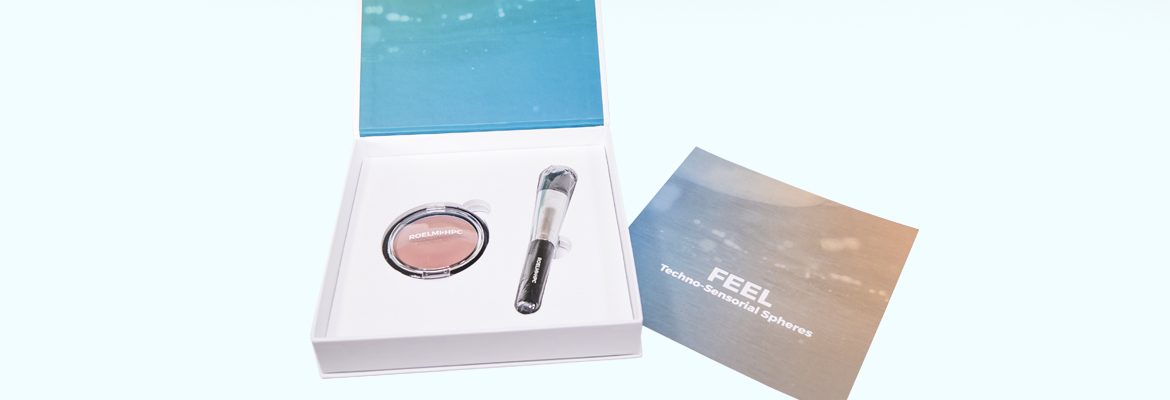Circular economy, innovation, regeneration of territories. The Novamont recipe remains the same, but the scope widens. The company from Novara has created Celus-Bi from Mater-Bi, the mother of all bioplastics, and has entered the world of cosmetics. The jump appears to be huge, yet the spirit is unchanged. This new step is based on the same ambition: finding a clean industrial solution to the great problems of our time.
In this case we are talking about keeping fossil polyethylene “dust” at bay, a material present in every body care cosmetic product, which ends up directly in the sea and in our domestic drains, due to the fact that purifiers are unable to intercept it. It is estimated that up to 24 tonnes of microplastics from the use of cosmetics are dumped into European seas every day, for a total of 8,600 tonnes each year.
The Mediterranean is one of the seas with the highest concentration of microplastics in the world. Numerous studies confirm that once these non-biodegradable micro-fragments enter the sea, they are ingested by fauna and, in combination with accumulated toxic substances, enter the food chain that ends up on our tables. According to research carried out by Gand University, those who regularly eat fish can ingest up to 11,000 fragments of plastic per year, so much so that the European Food Safety Authority has alerted scientists on the importance of studying the effects of microplastics on our organism, “due to the possible microplastic pollution present in commercial fish.” The European Commission itself is worrying about microplastic pollution originating from the cosmetics industry; in the fist months of 2018 it started a series of consultations with stakeholders in order to gather information and propose a restriction on the use of microplastics added to cosmetics and other sectors by 2019.
Novamont has spent years studying possible alternatives in anticipation of these developments, and is now ready to enter this polluted and polluting market, offering a series of biodegradable options to the cosmetics industry.
This is how the Celus-Bi line was born, a product that uses renewable plant based raw materials from traditional agriculture. The result of Novamont’s research, in partnership with Roelmi Hpc, an Italian company that operates in the market of health and personal care products, is the Celus-Bi line which provides an array of high performance and low environmental impact ingredients, perfect for use in hydrating creams, shampoo, foundation makeup, lipsticks and more. Celus-Bi Sphera is a line of biodegradable spheres that can be used as exfoliating agents; if these spheres are made with non biodegradable microplastics (their diameter is generally between 100 microns and 1 millimetre) they cause accumulation in purifying muds, causing pollution in the of microplastic dispersion in the soil or the sea.
Celus-Bi Feel is a polysaccharide based texturizing agent, physically modified for the creation of applied and non easily washable products like makeup or hydrating creams. Microplastics currently used as additives in these products are non biodegradable, this is why purification plants are not able to trap them. The added value of Celus-Bi Feel is the fact that it can biodegrade in the purification plants, before it reaches the soil or the sea.
The Bioeconomic Challenge
Novamont’s new line of products shows how the bioplastics and chemistry industry can represent a complex and long, yet possible, paradigm shift, and how they can have tangible impacts. Like the Patrica Mater-Biopolymer plant, in the province of Frosinone, that was almost decomissioned and has now doubled production, after shifting from PET to biopolyesters thanks to the intervention of Catia Bastioli, CEO of Novamont. Patrica’s success (that went from 50 to 100,000 tonnes of biopolyesters after a long reconversion operation) was celebrated in mid October of 2018 with the official inauguration of a second line. Now the real challenge is to accelerate the symbiosis between the sectors that have remained disconnected until today. The connection is now possible thanks to the platform and the infrastructures created by Novamont, growing opportunities for new products like Celus-Bi exponentially. Without this acceleration, the efforts towards making Italy competitive in the field of biomaterials will end up being not very useful, or even useless.
According to Catia Bastioli, the ingredients for this revolution can be summarised in a great challenge shared on a European and national level and applied on a regional level. The mission should be to revitalise territories from an economic, social, occupational and environmental point of view, starting from the critical elements of the territory itself and transforming them into opportunities. We could start by promoting agricultural demonstrators in less developed areas of southern Italy, which could be multiplied in the Mediterranean in order to maximise the development of research in the agricultural and agro-industrial sectors and its impacts. A census programme for industrial sites which are no longer being used and the development of revitalisation project with new and innovative technologies, could bring a continuous integration of processes, minimising environmental impacts.
The idea is to weave together agricultural and industrial production, aiming at coming full circle in single territories, and restoring polluted areas whilst creating innovation and development, without throwing anything away. This is the perfect circular economy dream, something Catia Bastioli has been working towards since the time of Raul Gardini’s Montedison, and the Fertec research centre he co-founded. Today we are in a different century, but the challenge of green chemistry is still an opportunity that is waiting to be exploited.
Celus-Bi, www.novamont.com/celus-bi/eng
Top image: Credit: Novamont


